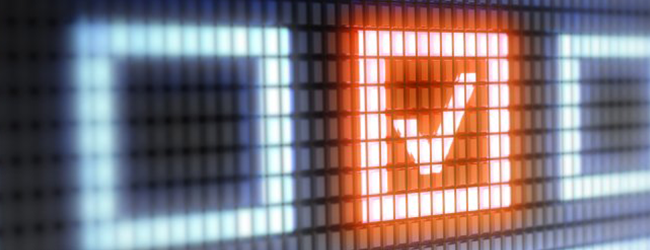Our digital cinema (d-cinema) encoding and distribution submission guidelines are located below. Please read them carefully and contact us with any questions.
Tape and File Formats
We can take films in almost any format. We are used to working with QuickTime ProRes (422 and 444), image sequences such as DPX, TIF and many more.
If picture is submitted interlaced, we may have to de-interlace it before we begin. Sometimes broadcast tapes may be in a progressive format but the end credits may be interlaced. Please check that the entire film, including any logos, graphics and credits are progressive. De-interlacing will result in additional charges and possible quality loss.
Please note that it is not necessary to break the film into reels. We are happy to accept films in reels. But reel breaks, if required, will normally be added by us (usually every 20 minutes). Unlike film reels, breaks in digital prints do not cause any visual or audible artefacting on playback.
Hard Drives
Hard drives should be Windows NTFS, Linux EXT2/3 or Mac formatted. If submitting a hard drive we request that you make sure it is 7200RPM with at least a firewire 400 port but ideally an ESATA or USB 3 connection. If sending drives from abroad we recommend sending two copies in case one gets damaged in transit. Please do not submit on RAID 0 drives as they are too fragile.
Please make sure hard drives are packed carefully with plenty of foam / bubble wrap. We cannot be held responsible if a hard drive arrives damaged.
DCPs
We can accept DCPs created by other labs. However, they must be fully DCI compliant. We work with DCPs mastered to the SMPTE phase 1 specification (INTEROP DCP with SMPTE KDM) with plans to transition to SMPTE phase 2 in the near future. This is in-line with industry practice throughout the UK.
DCPs will be put through a full validation process and those that we determine do not comply with DCI recommendations can not be distributed.
In many cases we will be able to repair issues but this will have cost implications.
Aspect Ratio
We expect your film to be in either Flat (1.85:1) or Scope (2.39:1) aspect ratio. If your picture is 1920×1080 we will scale it a small amount so it can be projected as 1.85:1. This service is free of charge.
Frame sizes:
- 2K/4K
- 1.85:1 (FLAT) 1998×1080 / 3996×2160
- 2.35:1 (SCOPE) 2048×858 / 4096×1716
Frame Rate
Your frame rate should be 24P / PsF. If it is not, we can help you convert it. Please specify this option when requesting a quote.
If your frame rate is 25 we can correct this by slowing the picture and sound down by 4% and performing pitch correction on the audio (therefore making the film 4% longer). But this does have cost implications. We can do the conversion free of charge if you do not require pitch correction. But this will have a noticeable effect on the audio with voices and music becoming deeper in tone. Please note that some music licences prevent producers from pitching audio down without correction.
Colour Space
We can accommodate any colour space including Rec709, Rec2020, P3, SRGB and more. You do not have to do your own XYZ conversion. In fact, we prefer doing it here because we have extremely accurate methods and can ensure the picture is an exact match to your grade. All our QC facilities are fully calibrated to SMPTE and Dolby standards.
Delivering 10bit DPX Log Files
We can accept files in log colour space. However, this will require a more in-depth colour space conversion. This will effect your quote so it is important to let us know if you are delivering in this format.
Audio
If you’re submitting Quicktime or similar then sound can be taken directly from this. If you’re submitting an image sequence then sound should ideally be delivered as 48Khz WAV no more than 24bit. Each channel should be provided as a separate WAV file and clearly labeled. We can accommodate for mute, mono, stereo, 5,1, 7.1 and Dolby Atmos.
Audio must be in sync and, if provided as wavs, we recommend a 2-pip 48 frames before the first frame of picture and an end-pip 48 frames after the final frame of picture to help our encoders make sure the sound is properly positioned. If the film is broken into reels, each reel should contain a 2-pip and an end-pip.
Please see above for information about frame rate conversions from 25 to 24. We usually pitch correct using the DIRAC algorithm but others are available on request such as MPEX3.
All our QC facilities are fully calibrated to Dolby standards.
Audio levels:
Reference level -20 dBFS at an SPL of 85 dBc
Note that average levels should not exceed 82dB. This standard is based on measurements by the Dolby LEQ Meter which gives a numeric value to a loudness average over the duration of film. The sound level of 82dB is considered internationally to be the acceptable maximum level.
Subtitles
Subtitles should ideally be submitted in the Texas Instruments “CineCanvas” DCI compliant XML format.
We can also accept subtitles in other formats such as STL and convert them to the digital cinema standard. This doesn’t normally effect costs but please check with us.

